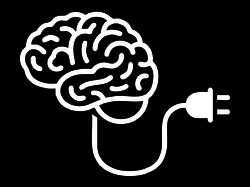This week at Mashable, I shared some ideas for extending the (alarmingly brief) lifespan of mobile apps. Here’s the dilemma app developers face:
An app’s shelf life lasts exactly as long as it can hold users’ attention. iPhone owners chew through apps, gulping down their content, then tossing them out and moving on. Studies show that the average user never launches an app more than 20 times before abandoning it. Less than 15% of downloaded apps get so much as a glance over the course of a week, and two months after purchase, only one-thirdof downloaded apps ever get used again.
This may not matter to you if your goal is to build one-off novelty apps; in that case, you might even expect people to launch your app only a few times. Laugh delivered, mission accomplished. If you’re trying to grow a following for your app, however, this is uncomfortable news. According to one survey, nearly half of all apps are downloaded based on a friend’s recommendation. Loyal users spread the word, but few apps ever manage to create a huge fan base. If you’re trying to create a long-term relationship with your audience, your app has to keep giving.
How to extend your app’s heartbeat? It’s all about keeping the content flowing. I suggest replenishing apps by offering content trophies, competition, community, and bolt-on tools. Check out the full article for the details. (Or check out Chapter 2 of Tapworthy for even more thoughts on this topic.)
Alas, somewhere in the Mashable editing process, the point of my travel-app examples kinda got lost. The reason I brought up Lonely Planet and OffMaps is that in a travel context, fresh content is a marker of achievement, just as much as completing a level of a game. A growing collection of destination guides memorializes your globe-trotting meanderings as readily as stamps in your passport. The app becomes a point of pride, not just a point of information.
Beyond just providing utility, in other words, the best apps often deliver emotional satisfaction, too. Welcome to the era of oh-so-personal computing.





